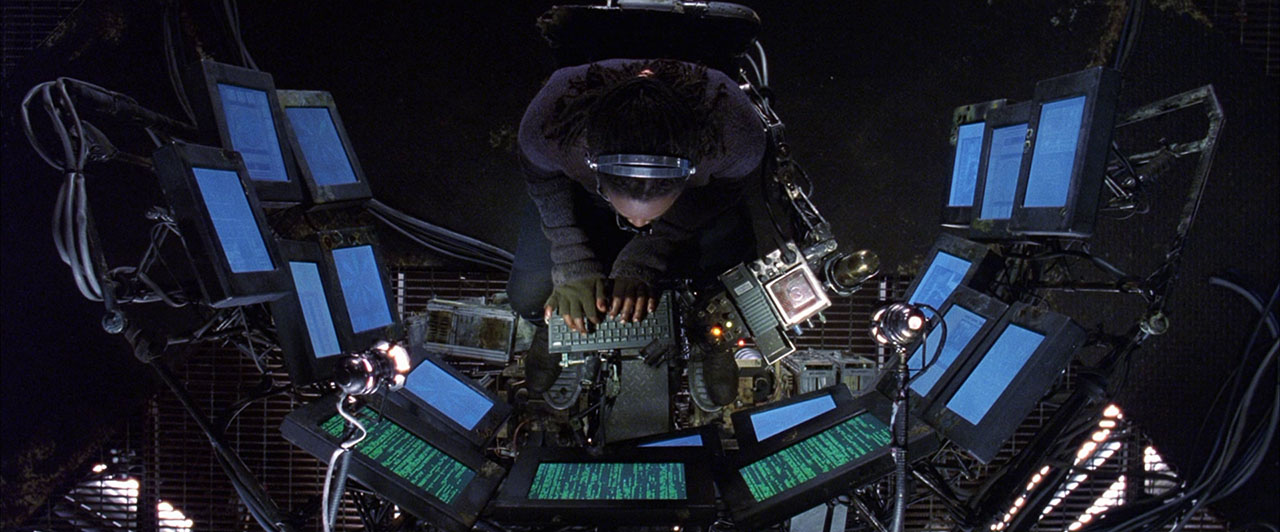Game of Death (1978, Robert Clouse)
Time for the post-Bruce-Lee movies in the Bruce Lee box set. Bruce had filmed about ten minutes of fights for this one, then he inconveniently died. The American studio knew Bruce was profitable, and that’s all they knew, so they cobbled together a new movie, blatantly using stand-ins and cutting reaction shots from other movies. Once they simply pasted a still photo of Bruce’s face over another guy. It’s full of callbacks to the previous movies (thanks to a films-with-the-film subplot), but anyone who enjoyed those is gonna be sad about this one. Even doc footage from Bruce’s actual funeral is used, when lead character “Billy Lo” is supposed to be faking his own death. And this is all in service of a third-rate crime thriller. 1 star for the music, 1 for Sammo Hung, zero for the rest.

After filming a scene, Billy is calmly threatened by a white suited gangster who wants protection money. He works for an evil bald guy who’s somehow involved in both a record pressing plant (which threatens Billy’s girlfriend’s music career) and a championship fight in Macao (their star fighter is Carl: Robert Wall from Enter the Dragon, who died last week). The gangster protection money plot had already been used in Way of the Dragon (and the Chang Cheh movie I just watched), but so what, it’s a plot, and movies need those.

Billy’s in hiding, letting the gangsters think he’s dead, which gives all the non-Bruce actors an excuse to wear heavy disguises. Carl cheats and beats Sammo Hung in the ring, but Sammo puts on a good showcase, then Billy slaughters Carl in the lockers. The girlfriend (Colleen Camp) inevitably gets kidnapped, and a stuntman wearing Bruce’s yellow tracksuit and a dark helmet fights some motorcycle dudes in a warehouse. Finally, the one true Bruce fights some dudes (including the absurdly tall Kareem Abdul-Jabbar), and it’s glorious for a few minutes. He never even touches the old bald gangster (Dean Jagger, the sheriff of Forty Guns), who falls off a roof while running away, the credits rolling before he even hit the ground.
Movie magic via still photo:


–
Game of Death II (1981, Ng See-yuen)
The only sense that this is a sequel is it’s playing the stand-in game with old Bruce footage (the film stock still doesn’t match). Bruce is hilariously dubbed by some cowboy-ass American. He chills with an ass-kicking abbot then gets an incriminating film from some girl. At a friend’s funeral, he’s shot and falls to his death while chasing a helicopter that was stealing his friend’s casket(!), and now Bruce’s sad brother Bobby takes over as the lead, like Bruce took over from James Tien in The Big Boss – but not exactly like that, since Tong Lung is playing both brothers here. Now with an hour to go, the movie doesn’t have to pretend to star Bruce Lee anymore, and can cut loose. The dubbing is atrocious, but the Chinese/Koreans in charge of this movie have got more respect for Bruce’s legacy and more filmmaking and fighting talent than the doofus Americans in part one.

Lewis trying to be intense despite the cute monkey:

Bobby gets intel from a white monk that the evil Lewis and his scarfaced brother, masters of the Palace of Death, are responsible, so he heads on down. Lewis can’t be that evil – he keeps pet peacocks and monkeys. The Whatever Brothers (I didn’t catch their names) challenge Bobby, and he proves his mettle, then a sudden blonde girl gets suddenly naked, tries to kill him, then a guy in a lion suit joins in! Movie is already kinda nutty, and that’s before Bobby descends to the subterranean MST3K sci-fi lair with spacesuited harpoon-armed flunkies and electrified floors. Lewis is found dead, the scarface guy is suspected so Bobby beats his ass, but Bruce’s “dead” friend, who was stealing his own coffin to avoid discovery, is behind the whole thing. Friend/enemy Chin Ku is Jeong-lee Hwang of Drunken Master, the abbot was in Temple of Doom and Sammo’s Enter the Fat Dragon.



–
Bruce Lee: The Man and the Legend (1973, Shih Wu)
Polishing off the Criterion box set with a return to the shameless, shoddy quality of Game of Death 1, this time in documentary form. Opens with ten minutes of news film from Bruce’s funeral, which doesn’t sound like such a long time but really felt like it, making me realize I am not cut out to watch Loznitsa’s State Funeral. Then a chronological run through his life and career, with lots of slow zooms into photographs, and a narrator who sounds like he’s from some MST3K short, like How to Go on a Date. Why is the dialogue in the movie Bruce was in as a child covered up with horn music? Why does the English narrator sometimes talk over people speaking English, telling us the same story at a slightly different pace? When Bruce defeats Bob Baker in Fist of Fury, “Baker studied for seven years under Bruce, but he is still no match for his teacher,” the narrator confusing an actor’s skill with a scripted scenario. It closes with then-unreleased Game of Death footage – in fact, Enter The Dragon wasn’t even out yet – in Hong Kong, this quickie doc beat it into theaters by a week. Shih Wu was an assistant director on A Better Tomorrow III, which I’ll probably end up watching eventually.











































